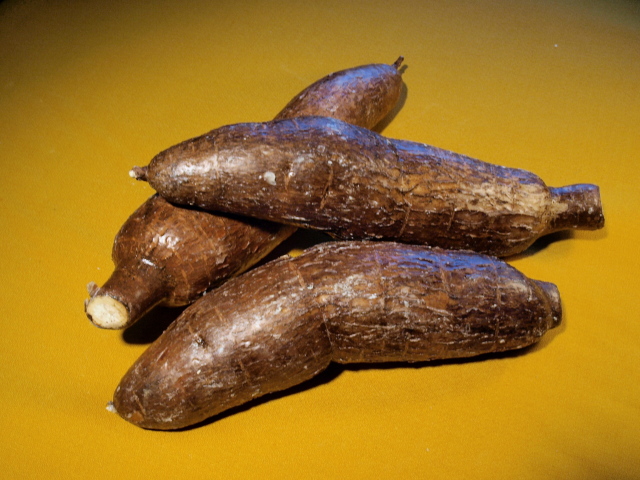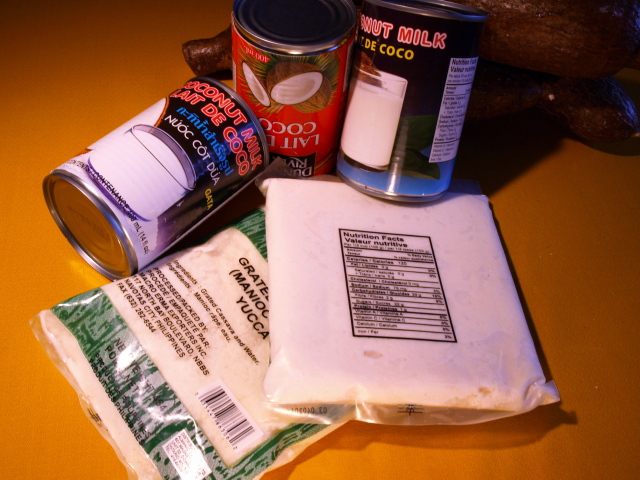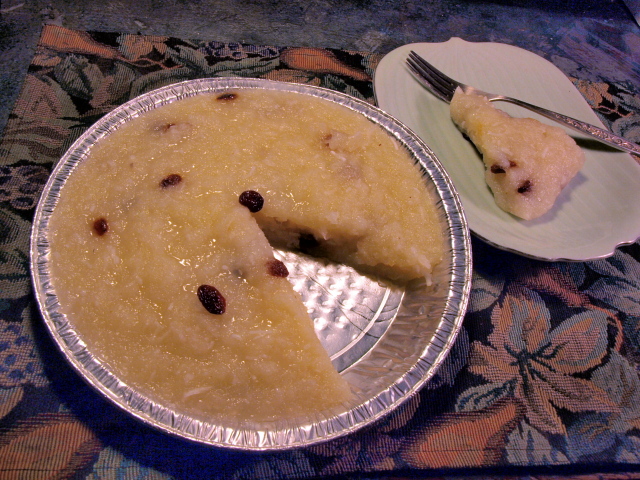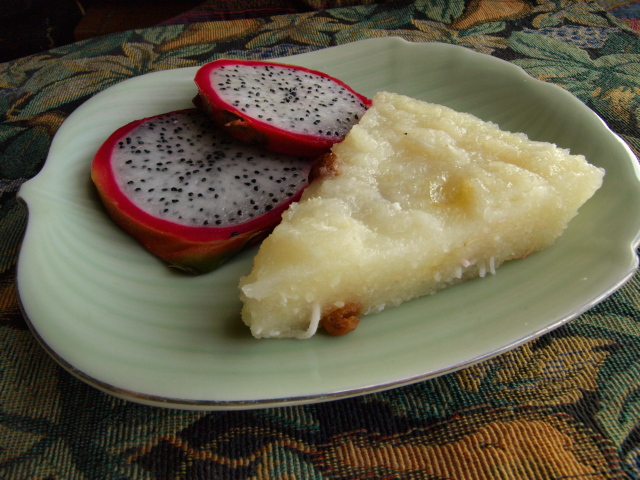Steamed Cassava Cake
 Cassava or yuca is originated from South America; it is a staple food in this continent and other warm regions. There are two kinds of cassava - sweet and bitter.
Both of them contain a very minute amount of cyanogenic glycosides (hydroxycyanic acid), which are toxic and harmful to people. Thus, cassava should never
be digested raw, though well cooking can generally eliminate the poisonous toxins. Cassava is a low calorie root-vegetable composing of about 38 percent carbohydrates,
1.4 g protein, and 0.3 g fat. It has a high percentage of potassium and contains other minerals such as calcium, magnesium and sodium. It is also high in Vitamin C
and other vitamins - B, K and E.
Cassava or yuca is originated from South America; it is a staple food in this continent and other warm regions. There are two kinds of cassava - sweet and bitter.
Both of them contain a very minute amount of cyanogenic glycosides (hydroxycyanic acid), which are toxic and harmful to people. Thus, cassava should never
be digested raw, though well cooking can generally eliminate the poisonous toxins. Cassava is a low calorie root-vegetable composing of about 38 percent carbohydrates,
1.4 g protein, and 0.3 g fat. It has a high percentage of potassium and contains other minerals such as calcium, magnesium and sodium. It is also high in Vitamin C
and other vitamins - B, K and E.
Many recipes are available for cassava, but most use eggs and cheese. Here, the quick recipe is a low calcorie one, mainly of cassava, coconut milk and sugar and using steamer instead of ovens.

Ingredients
454 g (1 lb cup) grated cassava (frozen)
60 ml (4 tbsp) cornstarch
250 ml (1 cup) coconut milk
80 ml (1/3 cup) pure sugar
a spray of vegetable oil
30 ml (2 tbsp) shredded coconut (optional)
a handful of raisin (optional)
Preparation
1. Slightly thaw the cassava as it is easier for the cassava to drop from the bag into a mixing bowl.
2. When the cassava is thawed, start the mixing.
3. Pour in the coconut milk and the sugar.
4. Mix in the dry ingredients - cornstarch, shredded coconut and raisin.
5. Oil a baking dish/pan (8 in. or 20 cm diameter) with a spray of vegetable oil.
6. Pour in the mix to the pan and steam for 10-15 minutes. 7. Take out the cake/pan from the steamer to cool for 15 minutes or so.


Left: Steamed cassave cake Right: cut cassava cake & dragon fruits
Note on Steamer:
In the Orient, cakes are often made by a steam bath in an "oven" or steamer. One chief advantage of steaming is - it uses less energy as steam carries latent energy
while a fire-oven uses radiating energy and little hot air. One result is less baking time; another advantage - the cake can always be moist.
There might be steamers available in large Asian stores or be ordered from the Internet. Sometimes, you might also find steamer baskets/dishes. The seller might tell you how to use the steamer baskets. Otherwise, many rice cookers might come with a steamer kit. If nothing available, you can use a deep pot for pasta cooking.
Stack neatly some stainless forks at the bottom in one or several layers, one layer of 4 forks. Fill the pot with water just beneath the top layer of forks. Use high heat to boil the water. Place a common baking pan (with the batter) at the top of the forks, allowing sufficient space between the edge of pan and the wall of the pot. Check the hot water not boiling into the baking pan. Cover the pot with the lid. Finally, use the usual baking method to check if the cake is done - poke using a chopstick or a long knife to the center of the cake.